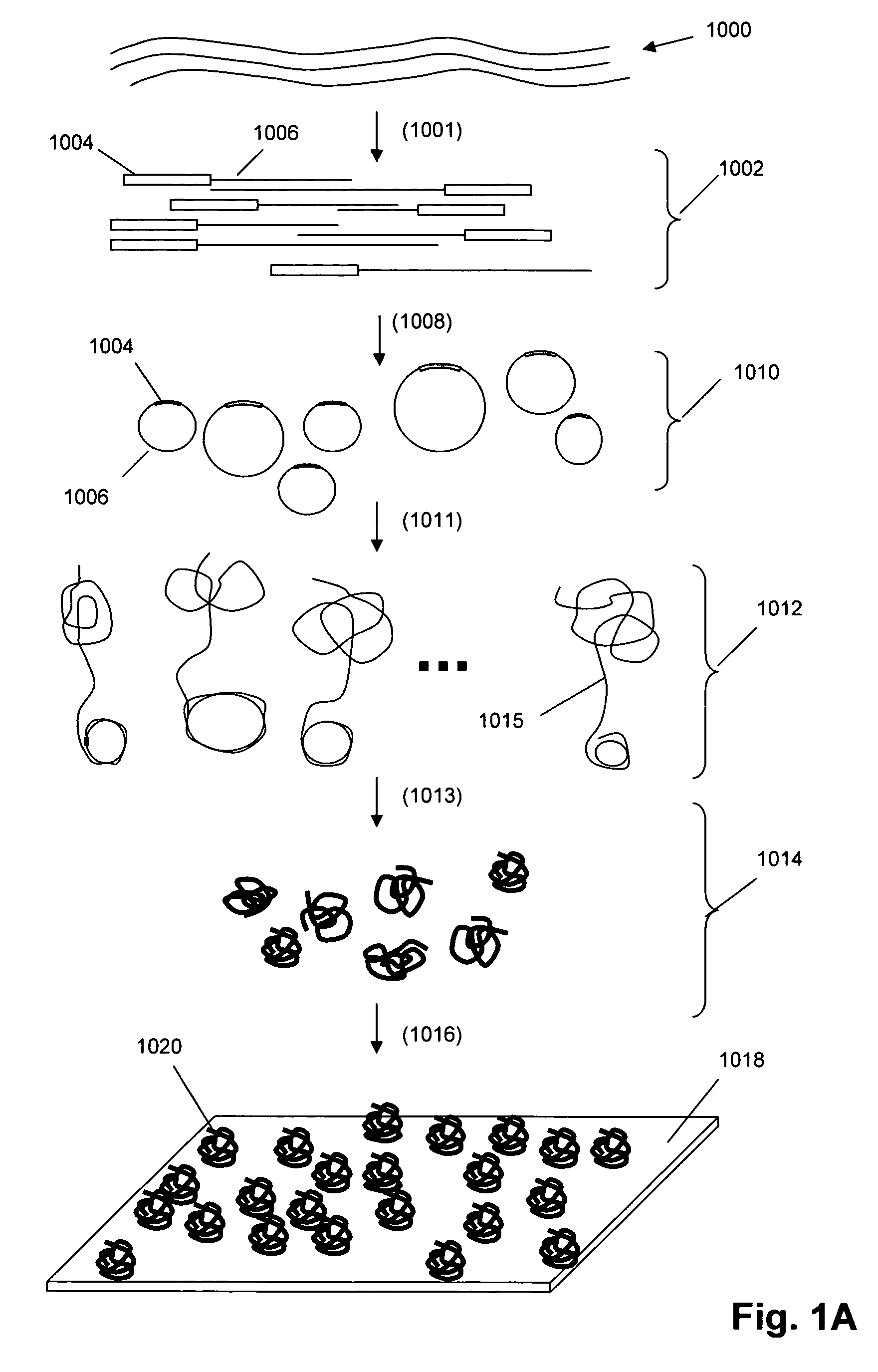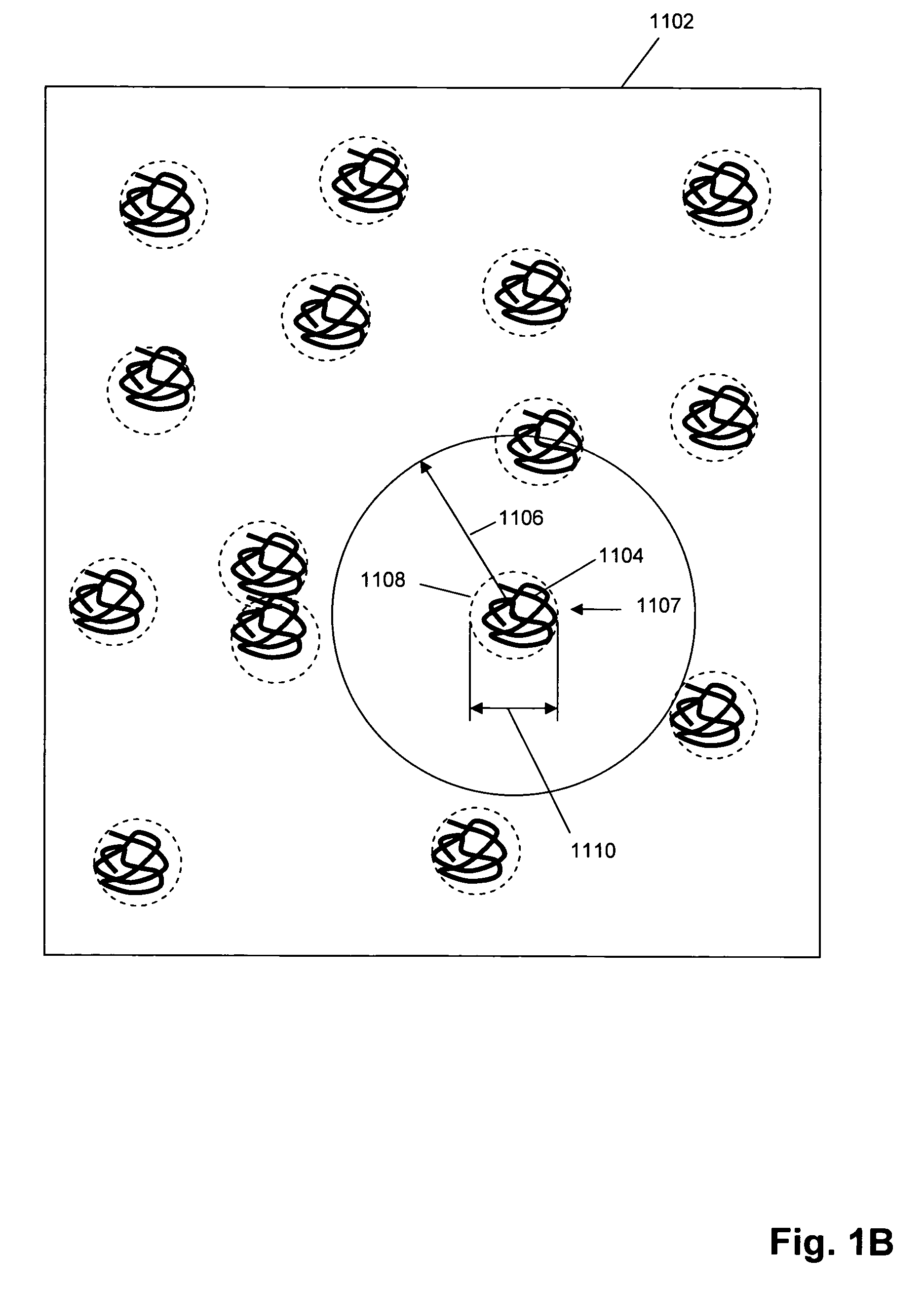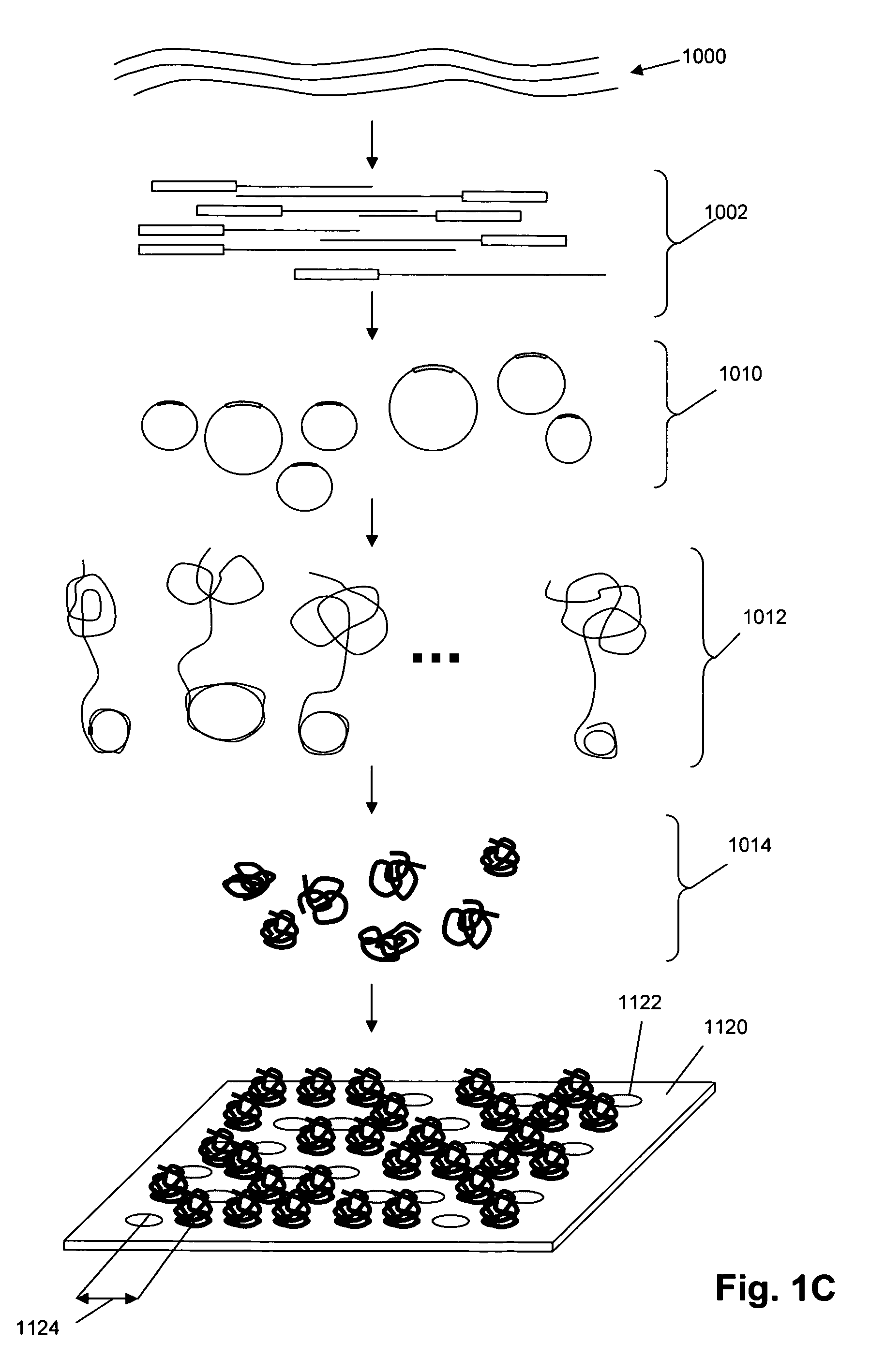Single molecule arrays for genetic and chemical analysis
a single molecule array and array technology, applied in the field of single molecule array fabrication, highthroughput nucleic acid sequencing and genetic analysis, can solve the problems of increasing the scale of analysis in array-based schemes for dna sequencing, presenting serious signal-to-noise challenges, and still not meeting the requirements of truly low-cost analyses. achieve the effect of efficient high-resolution analysis
- Summary
- Abstract
- Description
- Claims
- Application Information
AI Technical Summary
Benefits of technology
Problems solved by technology
Method used
Image
Examples
example 1
Glass Cover Slip as Random Array Support Derivatization Protocol
[0163] In this example, a glass cover slip is prepared for use as a support for disposing DNA concatemers. The following materials are used: [0164] Millipore DI water [0165] 2.5 ml of 3-Aminopropyldimethylethoxysilane (Gelest) [0166] 1.6 grams p-phenylenediisothiocyanate (Acros Organics / fisher) [0167] 210 grams KOH (VWR) [0168] Ethanol (VWR) [0169] Methanol (VWR) [0170] Pyridine (VWR) [0171] N,N-dimethylformamide (VWR) [0172] Acetone (VWR) [0173] Equipment [0174] 100 c oven [0175] magnetic stir plate [0176] 12″×0.5″ magnetic stir bar [0177] 24 liter Nunc beaker [0178] 74″×8″×4″ glass containers [0179] 1 liter graduated cylinder [0180] 1 100 ml graduated cylinder [0181] 1 lab scale [0182] 1 Metzler scale [0183] 1 large weigh boat [0184] 1 small weigh boat [0185] 1 pair thick nitrile gloves [0186] 1 large funnel [0187] 1 ml pipettman with filter tips [0188] 1 nalgene stir bar [0189] 1 airtight container (tupperware)
Usi...
example 2
Preparation of RCR Products form E. coli Genomic DNA and Disposition onto a Glass Cover Slip
[0190]E.coli genomic DNA (32 ug) (Sigma Chemical Co) was fragmented with 0.16 U of DnaseI (Epicentre) at 37° C. for 10 min and then heat inactivated at 95° C. for 10 min. Reaction products were distributed with an average size of 200 bp as determined by agarose gel electrophoresis. If reaction products did not meet the required size distribution they were further digested with the addition of fresh enzyme. The final concentration was 200 ng / ul of genomic DNA.
[0191] The Dnase digested DNA (26 ng / ul) was reacted with Terminal deoxynucleotide transferase (0.66 U / ul) from New England Biolabs (NEB) in reaction buffer supplied by NEB. The reaction contained dATP (2 mM) and was performed at 37 C for 30 min and then heat inactivated at 70 C for 10 min. The DNA sample was then heated to 95 C for 5 min before rapid cooling on ice.
[0192] A synthetic DNA adapter was then ligated to the 5′ end of the g...
example 3
Distinguish RCR Products on Random Arrays Using Fluorescently Labeled Probes
[0200] PCR products from diagnostic regions of Bacillus anthracis and Yersinia pestis were converted into single stranded DNA and attached to a universal adaptor. These two samples were then mixed and replicated together using RCR and deposited onto a glass surface as a random array. Successive hybridization with amplicon specific probes showed that each spot on the array corresponded uniquely to either one of the two sequences and that they can be identified specifically with the probes, as illustrated in FIG. 4. This result demonstrates sensitivity and specificity of identifying DNA present in submicron sized DNA concatemers having about 100-1000 copies of a DNA fragment generated by the RCR reaction. A 155 bp amplicon sequence from B. anthracis and a 275 bp amplicon sequence from Y. pestis were amplified using standard PCR techniques with PCR primers in which one primer of the pair was phosphorylated. A ...
PUM
| Property | Measurement | Unit |
|---|---|---|
| area | aaaaa | aaaaa |
| nearest neighbor distance | aaaaa | aaaaa |
| nearest neighbor distance | aaaaa | aaaaa |
Abstract
Description
Claims
Application Information
 Login to View More
Login to View More - R&D
- Intellectual Property
- Life Sciences
- Materials
- Tech Scout
- Unparalleled Data Quality
- Higher Quality Content
- 60% Fewer Hallucinations
Browse by: Latest US Patents, China's latest patents, Technical Efficacy Thesaurus, Application Domain, Technology Topic, Popular Technical Reports.
© 2025 PatSnap. All rights reserved.Legal|Privacy policy|Modern Slavery Act Transparency Statement|Sitemap|About US| Contact US: help@patsnap.com



